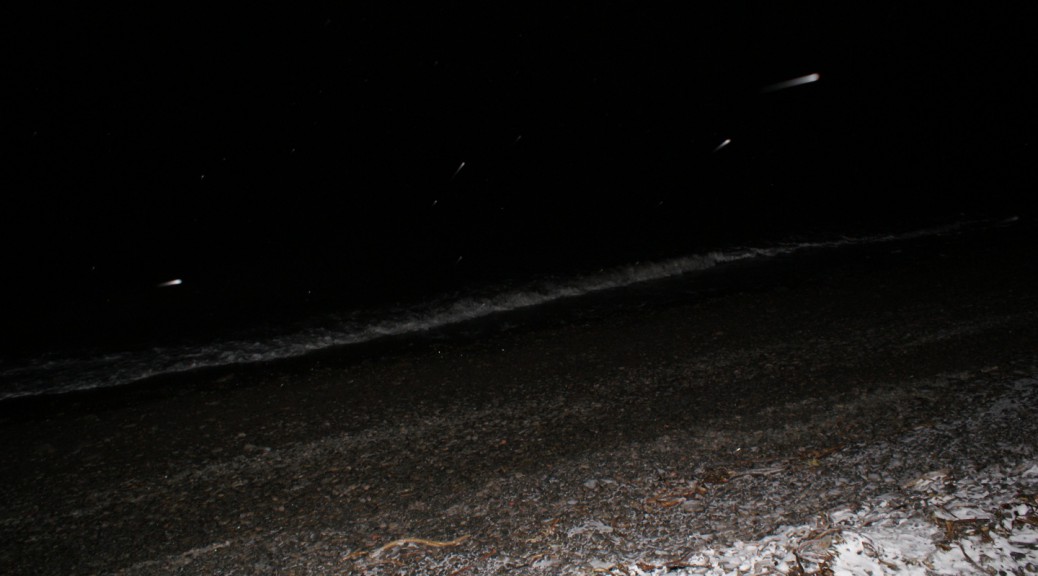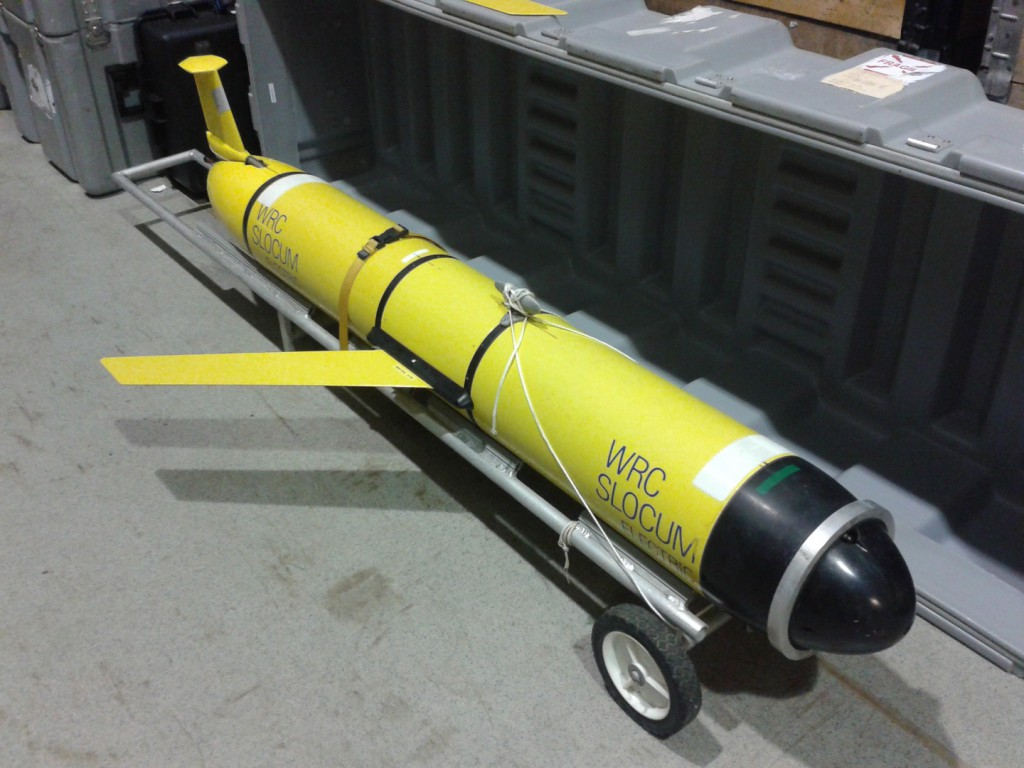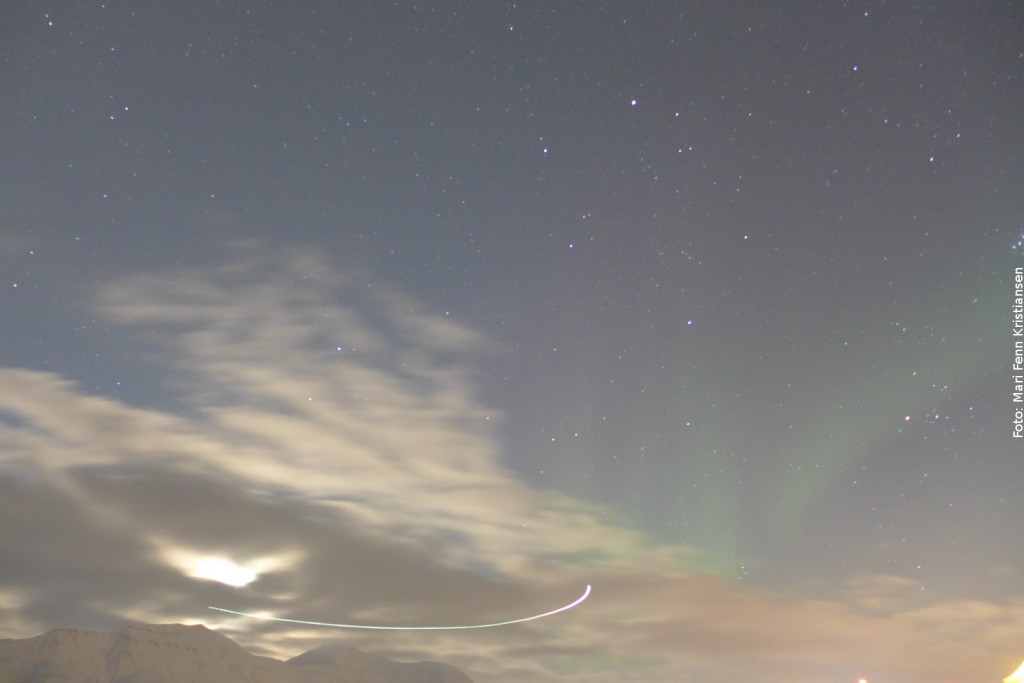The last measurement campaign was about the meteorological processes in Adventalen. This time it is about the air above and water in the fjords. In addition to the weather balloon and SUMO there are masts set up on the coast. Some students go out with the UNIS research vessel Viking Explorer and let sensors into the water
A 2m long “glider” (a constantly ascending and subducting autonomous submersible body) also takes part. The laptop in charge tinkles an alarming ship’s bell whenever new data arrives through Iridium satellites.
We set up our SUMO-station close to the water to fly as far as possible over the fjord. The swell gives us a strange feeling of summer vacation. There is routine in the flying. We empty 4 batteries in 4 hours. Every now and then we search the area around us for polar bears with a bright lamp.
Around nine in the evening the walkie-talkie asks for volunteers to go out with a speed boat. The Glider has detected moisture inside and will be brought in as a precaution. A little later the boat races down the fjord past us and brings the glider back safely. False alarm.
The glider does not have a propeller, the forward movement is generated through its stub wings and weight shift during the descent and ascent in the water. The system has many similarities with autonomous aircraft. The conditions are rougher, though. The time intervals are much longer – it can navigate through in the sea for months.
If you set you camera to a very, very long exposure time you get a hint of the northern lights, stars, the moon and a SUMO.




